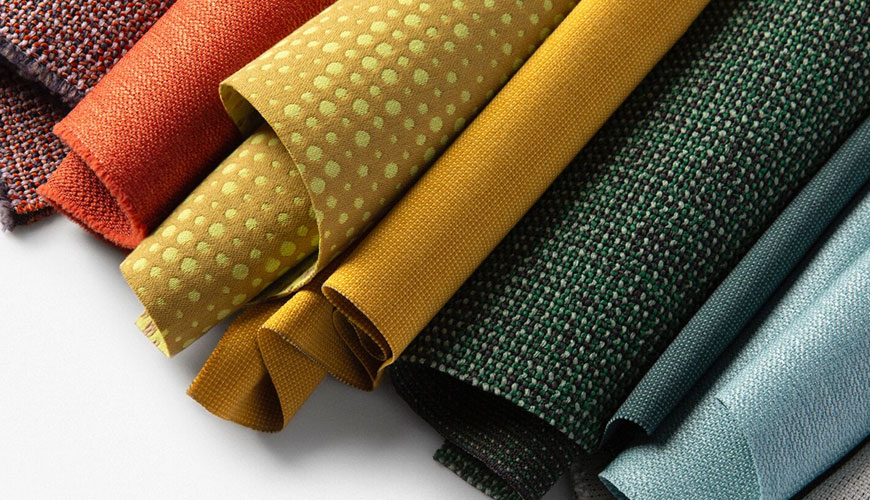

EUROLAB laboratory provides testing and compliance services within the scope of ASTM D5035 standard. The ASTM D5035 standard covers crimped strip and cut strip test procedures for determining the breaking force and elongation of most textile fabrics. Preparation is made for the wet test. The rolled strip test can be applied to woven fabrics, while the cut strip test can be applied to non-woven fabrics, felt fabrics and dipped or coated fabrics.

This test method is not recommended for knitted fabrics or other textile fabrics with high stretch (more than 11%).
The test specimen is clamped in a tensile testing machine and force is applied until the specimen breaks. Values for the breaking force and elongation of the test specimen are obtained from machine scales, dials, autographic recording charts, or from a computer interfaced with the test machine. The test method describes procedures for performing fabric tensile tests using four types of specimens and three alternative types of testing machines.
The rolled strip procedure can be applied to determining the force required to break a given width of fabric. The breaking force information on woven fabrics is particularly useful for comparing the effective tenacity of threads in the fabric with the combined tenacity of the same number of nonwoven threads. The procedure is not recommended for fabrics with less than 20 threads across the width of the sample. If 25 thread widths per sample cannot be achieved with 1 mm (20 inch) tape, 50 mm (2 inch) tape should be used. In general, the force observed for a 50 mm (2 inch) sample is not twice the force observed for a 25 mm (1 inch) sample and results should be reported as observed at 50 mm (2 inches) up to 25 mm (1 inch) strip without mathematical adjustment. If a fabric does not unravel easily, use either a cutting strip or a grip procedure.
The slit strip test in this test method is considered satisfactory for acceptance testing of commercial shipments of woven textile fabrics because the method has been widely used in the trade for acceptance testing. The same applies to the shear strip test for felt or non-woven textile fabrics. The method is not recommended for knitted fabrics due to its high stretching properties.
This test method displays values in both inch-pound units and SI units. Inch-pound units are the technically correct name for the conventional units used in the United States. SI units are the technically correct name for the system of metric units known as the International System of Units. Values specified in acceptable metric units or other units will also be considered standard. Values expressed in every system may not be exactly equivalent; therefore, each system should be used independently of the other, without combining them in any way.
This standard does not purport to address all, if any, safety concerns associated with its use. It is the responsibility of the user of this standard to establish appropriate safety, health and environmental practices and to determine the applicability of regulatory restrictions prior to use.
Our organization, EUROLAB, provides standard test method - strip method services for the breaking force and elongation of textile fabrics, within the framework of national and international standards, with its trained and expert staff and advanced technological equipment, among numerous test, measurement, analysis and evaluation studies. Provides testing services within the scope of ASTM D5035 standard.
To get an appointment, to get more detailed information or to request an evaluation, you can ask us to fill in our form and reach you.